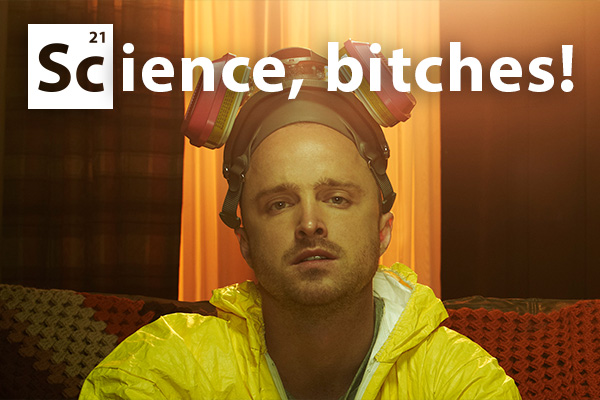Science, Bitches | Issue 12
Living the quantum way
You know that quantum physics deals with small things and those small things make up bigger things. Hence it would seem to follow that physics and biology should be friends. And they are! However, one of the reasons quantum physics has a reputation for being so weird is precisely because things happen on quantum scales that we just don’t see in our larger, biological world. For example, quantum coherence depends on us assigning wavelengths to things we would typically not consider waves, like electrons (this is called wave-particle duality). You may also have heard of quantum tunnelling (where particles have a probability of ending up places that should be impossible) and entanglement (two separated particles both react instantaneously when something happens to one of the pair). It would be surprising if these same bizarre quantum effects could be seen in the chaotic world of cells and larger organisms.
Green sulphur bacteria are just your typical photosynthesising bacteria. They spend their time converting energy from sunlight into glucose to provide energy for them to keep on existing. It is important to these bacteria, and also to plants (and things that eat plants and so on), that photosynthesis is very efficient. The mystery is just how they are pulling off such high (like 95 per cent) efficiencies. It has been suggested that quantum coherence could be at play – with each electron participating in the reaction using its wave-like nature to take several possible reaction paths at once and then for the reaction to only occur along the most efficient path. Normally this coherence would be lost with all that is going on inside a cell but maybe photosynthesis has found a way to stop this happening.
Birds use the earth’s magnetic field (magnetoreception) to migrate. Birds could well be figuring out where to go using the entanglement that Einstein called “spooky action at a distance.” The entangled particles are hypothesised to be pairs of molecules in the bird’s eye.
Another puzzle that quantum biology could unlock is how our sense of smell works. The current model of smell is a “lock-and-key” model. In this model, how things smell depends on the shape of the molecule (the key) being smelt because this molecule can only fit into a particular receptor in our nose (the lock). However, a group of scientists demonstrated that molecules with the same shape but different molecular weights can smell the same. These scientists suggested that quantum tunnelling, as well as shape, influences our ability to smell.
While understanding quantum biology would be interesting in its own right, it could also give us the ability to invent new, extremely energy efficient technologies. Quantum biology is a relatively new discipline, and even if its conjectures prove false, we will still learn more about the world by investigating them. That’s science, bitches!



